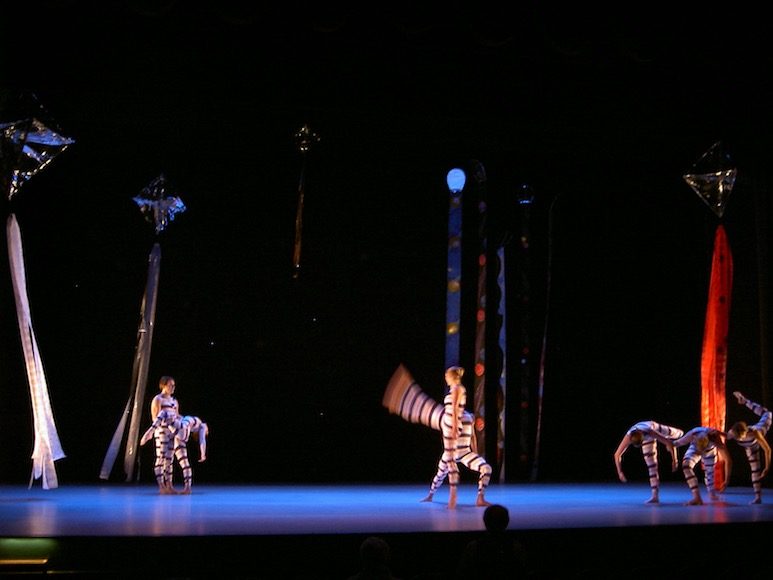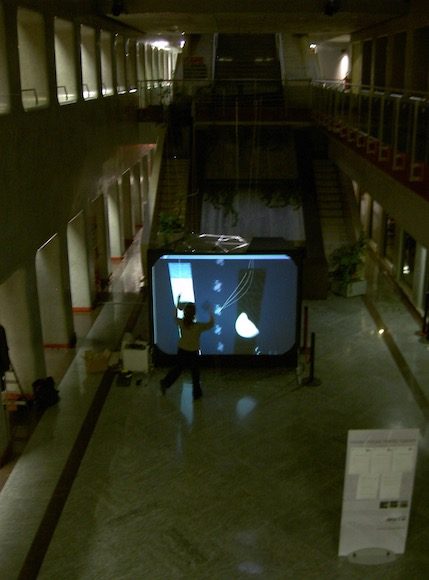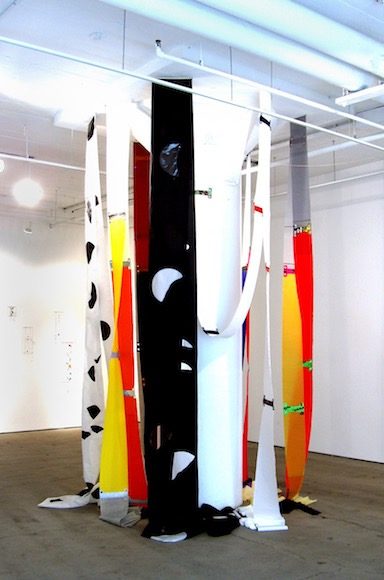
Solo exhibition by Jackie Matisse
Installation view
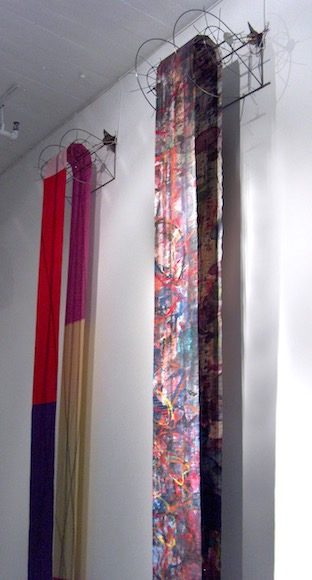
Solo exhibition by Jackie Matisse
Installation view
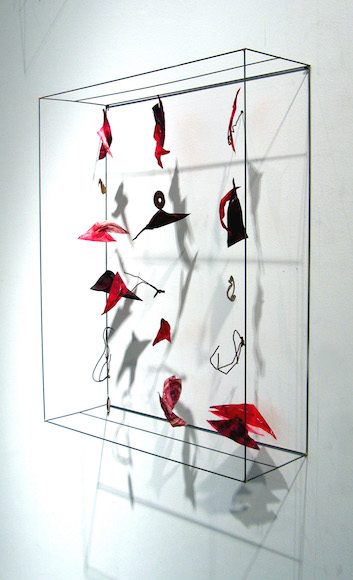
Solo exhibition by Jackie Matisse
Installation view
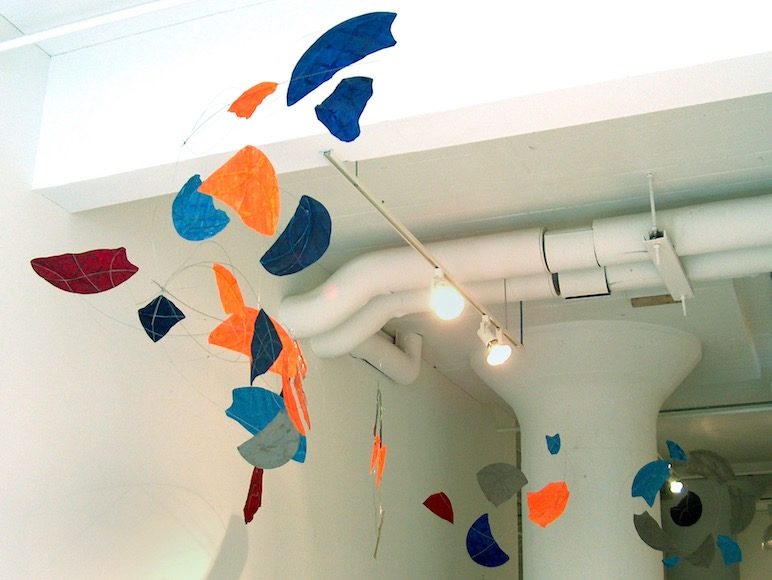
Solo exhibition by Jackie Matisse
Installation view
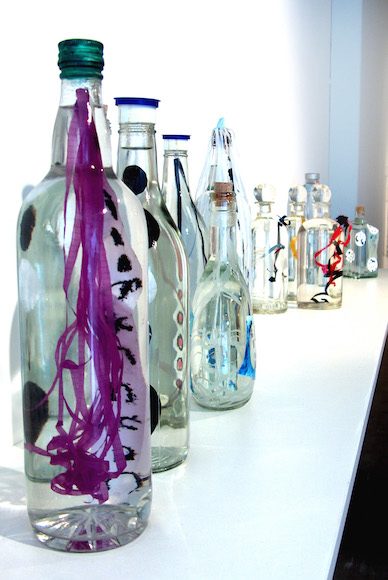
Solo exhibition by Jackie Matisse
Installation view
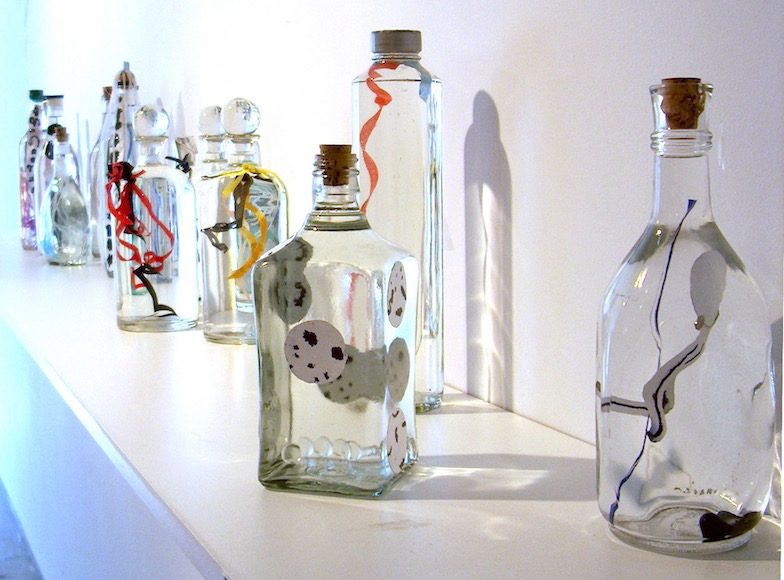
Solo exhibition by Jackie Matisse
Installation view
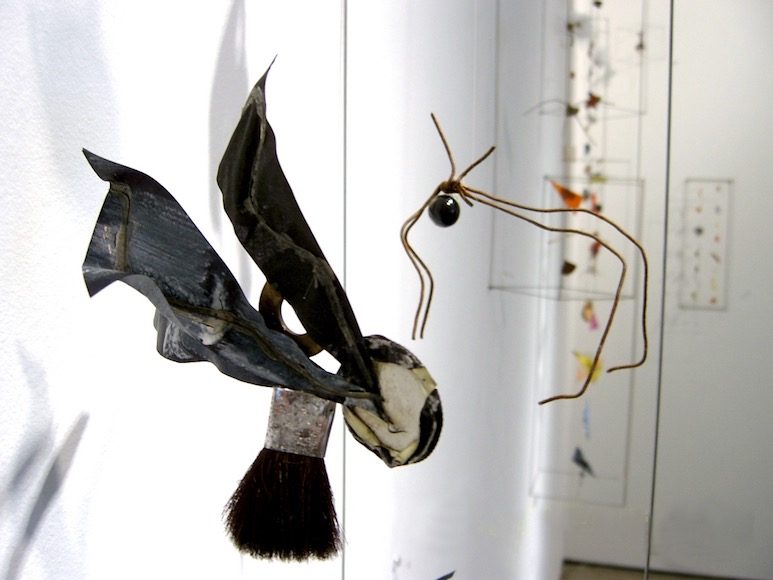
Solo exhibition by Jackie Matisse
Installation view
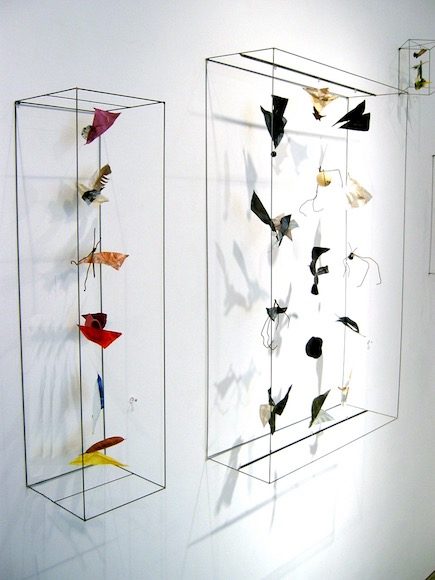
Solo exhibition by Jackie Matisse
Installation view
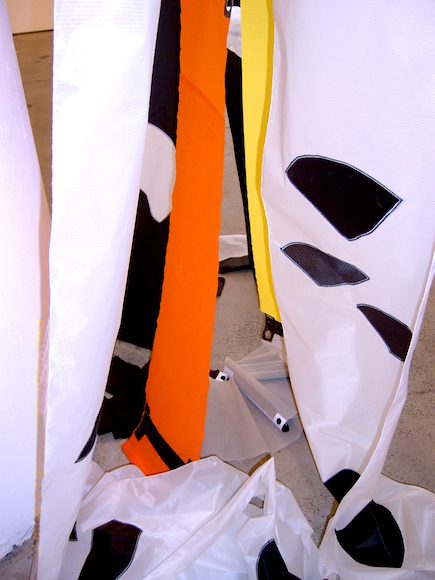
Solo exhibition by Jackie Matisse
Installation view
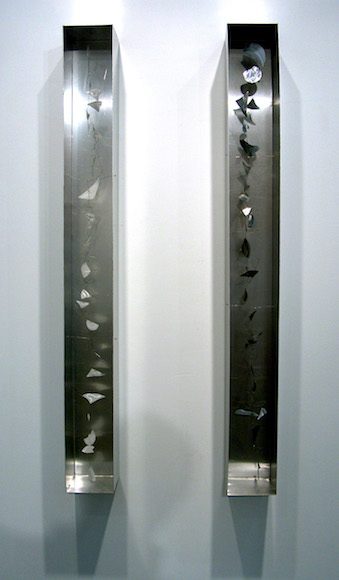
Solo exhibition by Jackie Matisse
Installation view
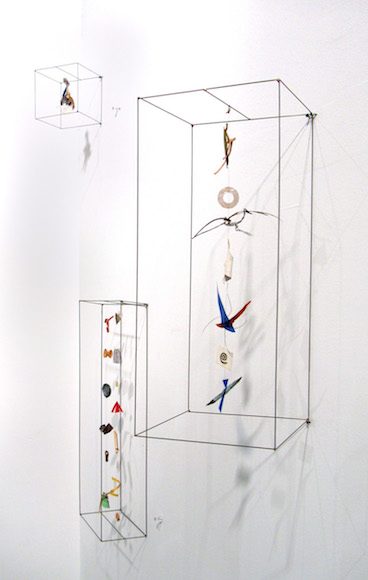
Solo exhibition by Jackie Matisse
Installation view
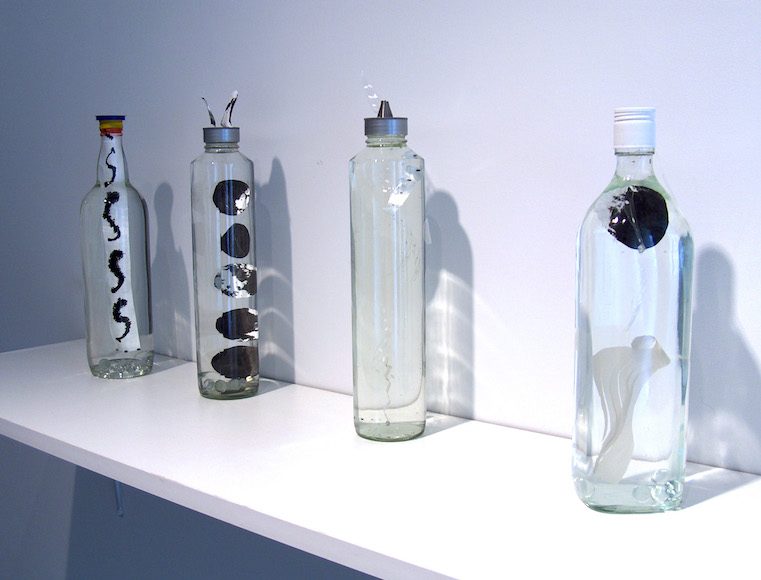
Solo exhibition by Jackie Matisse
Installation view
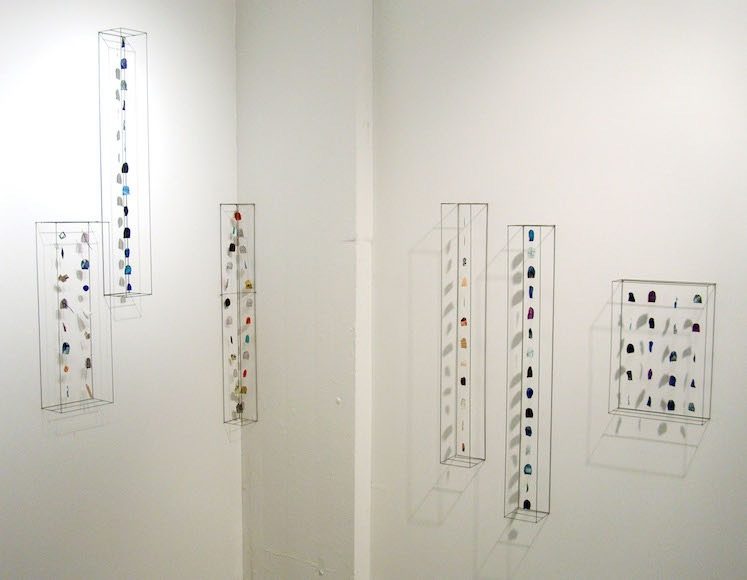
Solo exhibition by Jackie Matisse
Installation view
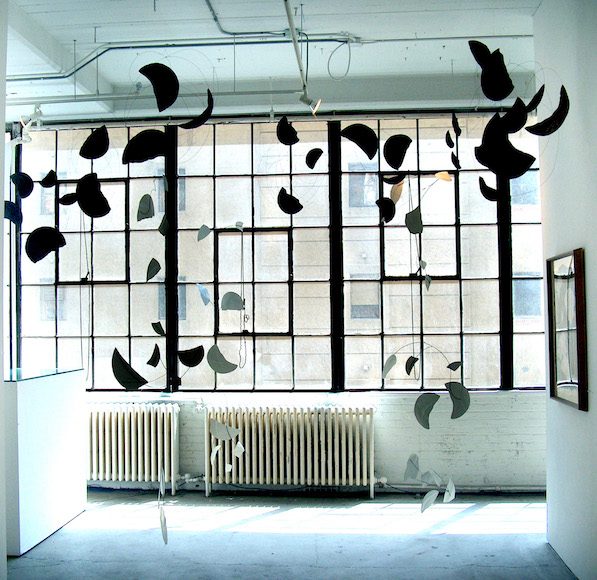
Solo exhibition by Jackie Matisse
Installation view
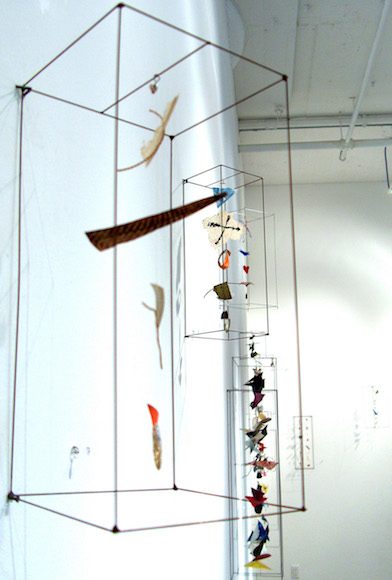
Solo exhibition by Jackie Matisse
Installation view
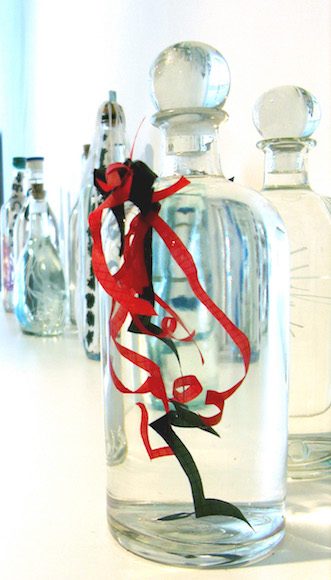
Solo exhibition by Jackie Matisse
Installation view
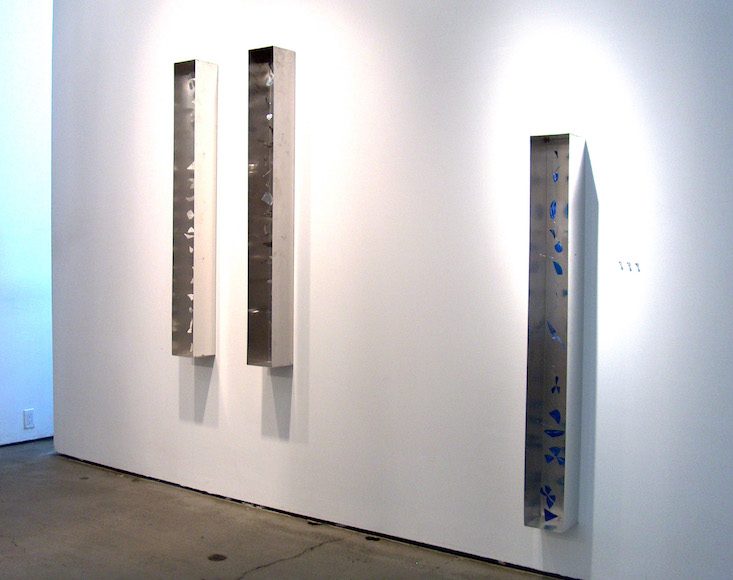
Solo exhibition by Jackie Matisse
Installation view
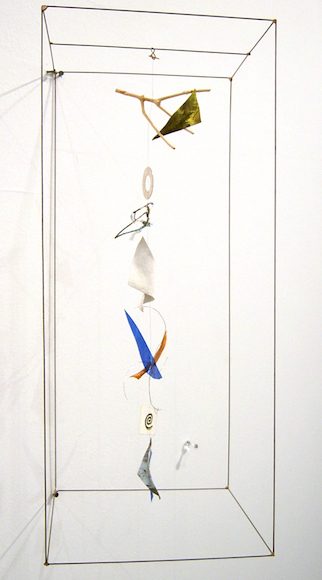
Solo exhibition by Jackie Matisse
Installation view
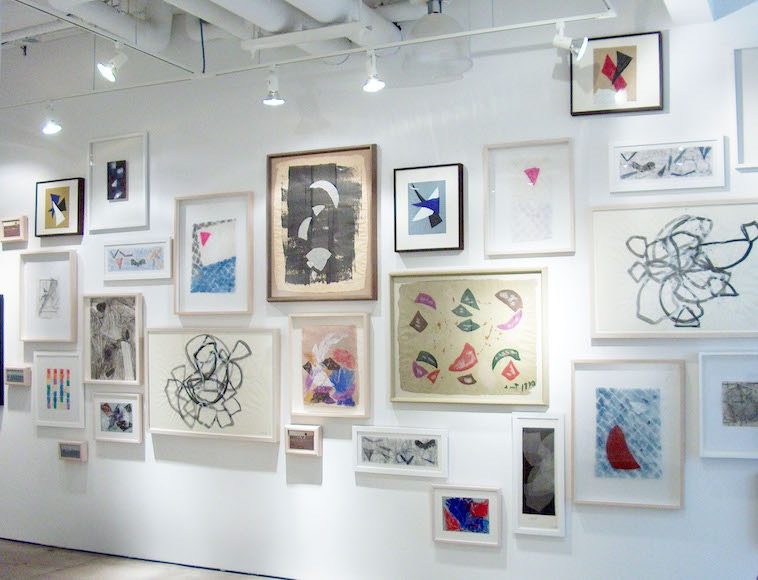
Solo exhibition by Jackie Matisse
Installation view
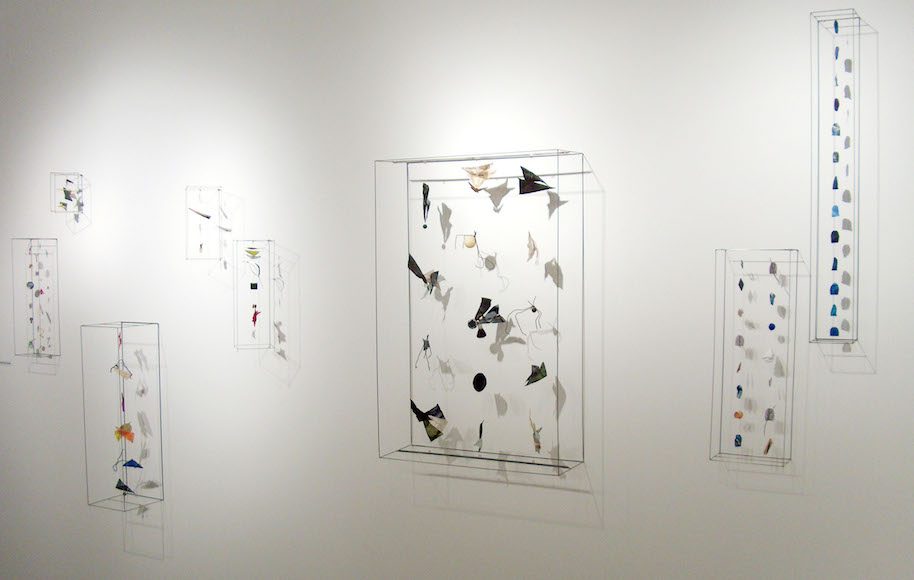
Solo exhibition by Jackie Matisse
Installation view
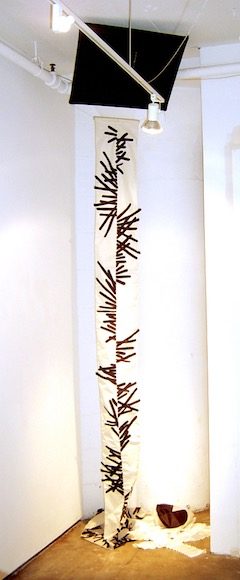
Solo exhibition by Jackie Matisse
Installation view
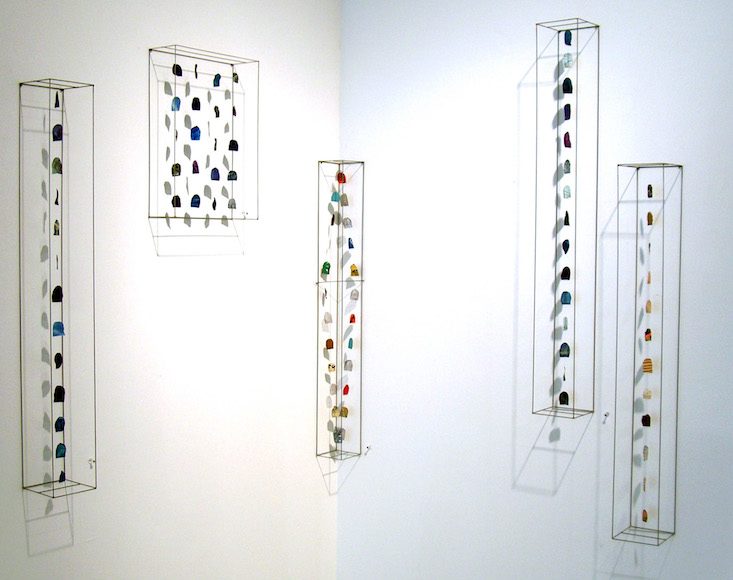
Solo exhibition by Jackie Matisse
Installation view
ZONE: Chelsea Center for the Arts is pleased to present an exhibition of artworks by Jackie Matisse that span a period of more than 20 years. Included will be examples of her famous hand-made kites and kite tails, mobiles, collages, assemblages, and graphic works. Video presentations of her collaborative projects on display include a film, “Tailing a Dream,” (1985)with composer David Tudor and filmmaker Molly Davies, and “Art Flying In & Out of Space” (2002 – 2005), a flat-screen interactive stereoscopic installation of her recent experimental work in super computing and “virtual reality” with David Pape of the Department of Media Study, University of Buffalo.1
Jackie Matisse grew up in Paris and New York in the ambience of Constantin Brancusi and the Surrealists, and many of the artists associated with her father, Pierre Matisse, and his important 57th Street gallery. She had the personal experience of watching her grandfather, Henri Matisse, create his series of colorful paper collages. By the late 1950s she had started her own family and was assisting her stepfather, Marcel Duchamp, in assembling his Boite-en-Valise (portable museum) while finding her unique direction as an artist in the multi-dimensional motion of kites.
Kites have a rich tradition as objects of ritual display in Asian cultures and a kinship to the ceremonial unfurling of heraldic banners and flags. But kites also convey a popular image that can be shared in play with family and friends and are more modestly engaging and self-effacing than what we expect when we are experiencing “art.” By 1962 Jackie Matisse had begun thinking about kites as a form that could set art in motion. While taking a cab to the airport from NYC, she saw a single kite flying over Harlem that appeared to her like a “line drawn in the sky,” this image inspired her to draw “on the canvas of the sky” and create “Art Volant”(flying art).2 For Jackie Matisse, the emptiness of the sky marked with the “line” of a kite became a work of art.
All of Jackie Matisse’s works, and her particular imagery, imply transitory movement, either literally or metaphorically. Found materials, casually appropriated imagery, light-loving translucence, and freedom of movement are intrinsic qualities of her work. Moreover, her kite-flying is a form of performance art that embraces the random effects of “chance” in the natural environment; an appreciation of “chance” is the sensibility inherent in all of her various works.
The aerodynamic forms of Jackie Matisse’s kite heads and tails, and the simple curved forms that often appear on the tails, are deceptively ultra-modernist when they are displayed indoors in galleries. However, Jackie Matisse has found personal sources for her modernist imagery, transpose strategies that have enabled her to escape from the shadow of the artistic giants in her family.
In the late 1960s, during the period of the Apollo Mission and the first man on the Moon (which Jackie Matisse felt was “the deflowering of the Moon”), she discovered a source for images of the Moon’s shifting visage in the local market place of Nemours where a tableware vendor was breaking some of his dishes in the street to advertise his plates (“Buy them or I will break them!”). 3 The idea of breaking plates in order to get people to buy them, and the uncanny resemblance of the broken ceramic pieces lying on the street to the phases of the Moon, resulted in her use of broken dish shards as stencils for the simple shapes in her work.
Recycling imagery is part of the transitory character of her work. Her long-time friend, the artist and critic Suzi Gablik, has pointed out that Jackie Matisse “is unique in the way that Ray Johnson is for his unusual correspondence art. She is an original, a ‘gutterartist’ who makes art out of gum wrappers, bottles, and bits of trash that one finds on the street, or in a terrain vague(a vacant lot) – sometimes tying bits of this material together or suspending them on human hair gathered from her family and friends.” For her underwater kites she found a special fabric that had the specific gravity of water so that they would have a sense of weightlessness. Gablik has also noted that Jackie Matisse’s working methods always invoke an air of mystery and usually involve a “secret recipe.”4
Jackie Matisse has succeeded in bearing the culture of her unique family by creating art in her own visual language.
End notes:
- “Tailing A Dram”was produced under the auspices of Centre Georges Pompidou, Paris, France. “Kites Flying In & Out of Space”has been developed since 2002 by the Mountain Lake Workshop of the Virginia Tech Foundation; the workshop is a collaborative, community-based art project focused on the customs and the environmental and technological resources of the New River Valley and the Appalachian region.
2. In the early 1970s Jackie Matisse and a cohort of fellow-artists including Tal Streeter, Curt Asker and Istevan Bodoczky, signed the Art Volant Manifesto, declaring that the kite is “ a vehicle joining the spirit and the physical….the kite’s flying line connects the human hand and mind with the elements.”
3. Leslie Vallhonrat, Art That Soars, Kites and Tails by Jackie Matisse, exhibition catalogue edited by Martha Longenecker, (San Diego: Mingei International Museum, 2000), p. 30. Ms. Vallhonrat’s essay was originally published by the Goldie Paley Gallery, Moore College of Art and Design, Philadelphia, PA. U.S.A. for the 1999 exhibition, Kitetail Cocktail.
4. Suzi Gablik in conversation with Ray Kass, April 13, 2005, Blacksburg, Virginia.
May 26 – June 24, 2005
Opening reception
Thursday May 26th 2005
6-8pm
Ever the kiteflying pioneer, Jackie Matisse, of Fontainbleau Forest , France , late last year collaborated on the first high-bandwidth art piece ever created by computer. Working with the Amsterdam Science and Technology Center, Matisse contributed 12 of her very long, beautifully decorated kite tails to the project. Because wind speed was added to the equation, extensive calculations were required for these real-time kinetic art pieces (kites). Computer operations, mainly at universities, around the world each took on a single one of the dozen tails. The computers were located in Chicago, Canada , Japan , Singapore , Virginia and elsewhere.
The simulation took place in Amsterdam in a three-by-three meter room known as the cave. Three-dimensional computer-generated stereo images were projected on the walls and floor. Visitors viewed the images with special glasses, allowing them to experience date in exceptional ways.
The test was dubbed “kites flying in and out of space” because the project was actually an illusion of sorts. A viewer could put his hand right through a flying, fluttering kite.
So what did the successful demonstration mean? One answer was this: the flying kites were a visual metaphor for high speed networking performance, an important harbinger of things to come globally.
Matisse takes a longer view. “The kites evolved from my use of the sky as a canvas and because they are hard to fly in all conditions, I have experimented with alternate spaces in the past, including under the water and on video. This virtual reality networking enabled me to compose and fly many more kites than I would have been able to fly in real space.
Only granddaughter of the artist Henri Matisse and stepdaughter of Marcel Duchamp, two of the four most influential artists of the 20 th century (the others are Picasso and Pollock), Matisse came to kites as her unique, chosen art form after raising a family of four in Paris. Daughter of New York art dealer Pierre Matisse, she had been reared and educated in the U.S. “Kites have helped me maintain my independence, to express what I feel about art through making ephemeral art works in the sky. Kites are a magical, never ending story and that’s why I cling to them. Whether putting kites into the air, or under the water, or into cyber space, I’ll continue to experiment with them.”
Jackie Matisse feels Duchamp helped her find kites because of his tolerant gaze. For her and for artists all over the world, he flung open the door to unheard of materials and potential directions for art. She says she took up kites after buying a 22-foot Thai snake kite, which she unfurled in the wind and soon lost. But it was a Pandora’s box for her; the image of this long kite flying in the air and creating unpredictable movement and color captured her imagination. She has been making and flying kites ever since.
Her view is that “the sky is a vast celestial canvas, offering the artist an unexploited working space. Kites sculpt the air, they play a game of freedom- they tell a mysterious story. They allow an expression of the infinitely variable interplay of movement, light and color.”
One commentator has called her kites a form of aerial painting. It has been observed they can be viewed as site- specific choreography for the sky. Another observer nicely compares them to Tibetan prayer flags inscribed with mantras, fluttering in the wind and connecting with the moving spirits of the air, thus dispensing the mantra’s benevolent power.
“Her work is inspired, comments Scott Skinner, president of the Drachen Foundation and a student of kite making and flying world wide. “Her interest seems to be with the environment as much as with kites. She provides a different way of seeing kites. She turns a kite into a functional object in which to view the environment. Her water pieces, involving mysterious movement, dappled color, implied sound, are particularly powerful. We all like the unexpected, and she provides it.”
In the 1970s, Matisse became associated with a loose association of visual artists who happened to use kites in their art—–not kite-makers turning out art kites, a significant distinction. Others in the group included the American Tal Streeter, the Swede Curt Asker, and the Hungarian Istvan Bodczky. What the group had in common was a modernist sensibility. The emphasis was on the use of simple, sometimes unorthodox material, on unpretentiousness, accident, the transitory. The collective viewed kiting as participatory, kinetic performance art.
Over the last two decades or so, Matisse’s airborne kites led her to more domesticated works—-assemblages composed of box-like wire armatures that support strings of small floating found objects and tiny sails of painted paper or spinnaker cloth. Rescued detritus is transformed into magical, elegant table pieces. Her swimming tails led her to water-filled bottles in which suspended arrangements of small, shaped tails of various materials became miniature studies for her large-scale underwater kite art.
Matisse even figured out a way to put movement into her long kite tails while hanging them indoors. She hangs them up on rollers and powers them into movement vie small electric motors. Simple, but effective. One of these hangs in the living room of her comfortable old house in the middle of a village. Complete with its own large courtyard graced by two large chestnut trees, the house has lots of paintings and sculptures. “Family and friends,” she says of the artists represented. That their names reverberate in Western art history is just the way it happens to be.
Matisse’s kite making studio is elsewhere in the village. It is two stories high and nicely organized. A notable prop there is a kite reel crafted for her by the artist Jean Tinguely. Although utilitarian, it is a work of art in itself.
Amid a Henri Matisse drawing and Duchampian chess paraphernalia and two of his ready mades (the famous bottle rack and the bicycle wheel mounted atop a stool, both replicas), Jackie Matisse gathers in front of the fire with two of her sons. They discuss Duchamp, who they admired and adored. Matisse adds a small note of reality to the talk. “Yes, he was wonderful, of course but he did smoke cheap Spanish cigars. When he played chess, he was wrapped in smoke.” One of her sons adds: “We still use the boxes they came in for one thing or another. A family vignette.” Despite the cigars, he lived until he was 82.
At a time in life when some would contemplate retirement, Matisse remains busy and fulfilled. She maintains a large household, tends to her family (three sons and an daughter, grandchildren, two dogs and a cat), has a large and devoted group of friends around the world. She exhibits her own work (most recently at a one-person exhibition at the Mingei International Museum in San Diego). And, importantly, she helps represent the family in dealings with the Henri Matisse and Marcel Duchamp heritage—-meeting with curators and scholars, overseeing a journal devoted to the Duchampian legacy, attending the still frequent exhibitions of their work around the world.
The of course when she can make the time, there are always her kites to keep her absorbed in art creative work. Jackie Matisse has this final comment: “Why do I make flying art? To fly is soothing to the soul.”
“Art Flying In and Out of Space” is a virtual reality simulation of Jackie Matisse’s real-world physical kites, although we may be calling it an ‘interactive stereoscopic installation’ rather than VR in this case. The installation is what’s called a projection-based VR system, as apposed to the perhaps more familiar head-mounted display, where users wear a helmet with computer displays attached. Projection-based VR started with the CAVE system developed at the University of Illinois’ Electronic Visualization Laboratory. One of the key elements of VR is to immerse the viewer in the virtual world (note that the meaning of ‘immersion’ is very loose and often up for debate). Head-mounted displays do this by attaching the display to the viewer’s head; projection-based systems do this by using very large screens that fill one’s field of view. A full CAVE is a 10 x 10 foot room with projections on multiple walls and the floor; due to space and budget restrictions, this gallery installation will only have a single 8 x 10 foot screen; when users stand up close, it will still (more or less) fill their field of view. The screen is rear-projected so that people can stand close without casting shadows on the computer imagery.
The display is stereoscopic, similar to 3D movies. The technology we use is polarized stereoscopy. Two projectors display different images, one for the left eye and one for the right eye. The projectors have different polarizing filters, and viewers wear matching polarized glasses to see the 3D effect.
A six-degree-of-freedom tracking system is used in VR systems to allow the computer to know where things (such as the user’s head & hand) are, allowing direct physical interaction with the virtual world, rather than having interaction mediated by a button/menu/etc GUI. In our case, we won’t be tracking the head (which normally is used to draw the graphics from the tracked person’s viewpoint), since several people will be viewing the display simultaneously, so we will use a fixed viewpoint for the graphics. We will use the trackers to allow 2 or 3 people to fly the kites – the ends of the virtual strings will be attached to the physical trackers, which the people can move around in 3D.
The sound for the piece is music by Tom Johnson. The music is dynamic – it plays in response to the motion of the kites, as manipulated by the viewers. The kites themselves involve a physics simulation known as a “mass-spring model”. Each kite is treated as a mesh of points; the points are affected by physical forces such as wind and gravity, as well as a “spring force” that keeps the kite together as a single surface. The earlier versions of the piece used supercomputers to perform detailed simulations of the kites, with the data being streamed back to the VR system over high-speed networks. As
we don’t have such resources for this installation, a much simplified version of the simulation will be running on the single Linux PC in the gallery. The motion of the simplified kites will still look very similar, just with less detail, and perhaps less realistic (although this is not likely to be apparent to most viewers).
The whole VR Installation consists of 2 or 3 PCs (one with a high-end “gaming quality” graphics card), an electromagnetic tracking system, 2 projectors, polarizing filters and glasses, a special polarizing-preserving screen, and speakers. We assembled the system ourselves at UB from these parts; some companies sell similar systems pre-packaged, but for a lot more money.
Dave Pape
Assistant Professor
Media Study, University at Buffalo
Jackie Matisse's biography and CV
Born in France, Jackie Matisse lived in New York until 1954. Since then she has lived in Paris making frequent visits to New York. Between 1959 and 1968 she worked for Marcel Duchamp, completing the assemblage of the “Boite en Valise”. At this time using her married name, Jacqueline Monnier, she began to make kites “in order to play with color and line in the sky”. In 1980 she showed kites which were created to be used underwater at the Betty Parsons Gallery in New York, and since then has continued to make kitelike objects intended for three different kinds of space: the sky, the sea, and indoor space, all linked through her use of movement.
In collaboration with Molly Davies, filmmaker and David Tudor, composer, she created two videos on her underwater and sky work. In the 1980’s she collaborated with David Tudor composer and musician. She just had a comprehensive show of her work at the Mengei International Museum in San Diego, California, U.S.A.
ONE PERSON EXHIBITIONS
2005 New Art Volant, Zone Chelsea Gallery, New York, N.Y
2002 Art Flying In and Out of Space, Virginia Tech’s Perspective Gallery and Virginia Tech Virtual Reality Cave, Blacksburg Virginia, April-May 2002. In collaboration with the University of Illinois at Chicago.Mountain Lake Workshop, April 2002 with Ray Kass, director.
2001 First event Echigo Triennale, August 2001, Sponsored by Art Front Gallery, Tokyo Japan
2000 Art that Soars, Mengei International Museum, San Diego, Ca. , U.S.A.
1999 Kitetail Cocktail, Goldie Paley Gallery, Philadelphia, Pa. U.S.A.
1998 Jacqueline Matisse Monnier Kiallitasa,Bartok 32 Galéria, Budapest, Hungary
1998 The World’s Most Beautiful Automobile, Milan, Italie , commission of ‘Wand’ a prize for Mr. Giovanni Agnelli.
1993 Magic Hair & Bottled Dreams,Galerie Satellite, Paris, France.
1988 Installation:Elle est rouge la petite fleur bleue, Musée Saint Roch, Issoudun, France.
1987 Galerie Jean Fournier, Paris, France
1985 Joan Mirò Foundation, Barcelona, Spain.
1984 Mobilis in Mobile, exhibition and air and underwater performance, Galeria Cadaquès, Spain.
Tangled Tails, performance and exhibition, Atelier Arc-en-ciel, Brest, France.
1982 Exposition à Poils, Samy Kinge Gallery, Paris, France
Ephemeral Gameswith performance, Galeria Cadaquès, Spain.
Underwater Kites and Moving Pieces, Anne Berthoud Gallery, London, England.
1981 The Traveling Exhibition, with performance, Philadelphia Museum of Art, Philadelphia Pa. U.S.A.
1980 Works Underwater and in Space, Betty Parsons Gallery, New York, N.Y., U.S.A.
1976 Kites, a Summer Celebration, with performance, ICA, London, England.
Galerie Jean Fournier, Paris, France.
1975 Formes d’Air et de Mouvement Musée des Sables d’Olonne, France.
- 9 Kite Tails Alexander Iolas Gallery, Paris, France.
GROUP SHOWS
2005 La Légèreté,Galerie Pixi, Paris, France
IS&T/SPIE International Symposium, Electronic Imaging 2005, January San Jose, California, Presentation of Art Volant dans l’espaceet ailleursby Dave Pape. No sound.
2004 Set for Cunningham Ballet Co. Joyce Theater, New York. NY
Festival International des Cerfs-Volants, Dieppe, France
Shaped by the Wind : Kites, The Hudson River Museum, Yonkers, New York
2003 Art Volant dans l’espace et ailleurs, presentation of a collaborative project of kites flying in virtual reality, with interactive sound by Tom Johnson; Nicéphore Days, ENSAM, Chalon-sur-Saône, France
Pour le Vacuovélodrome of Alfred Jarry, Nicéphore Days, ENSAM, Chalon-
Sur-Saône, France, 11 Kitetails
60 Poux du Ciel,Nicéphore Days, Espace des Arts, Chalon-sur-Saône, France.
Wabi Sabi in the West, A.V.C. Contemporary Arts Gallery, NY, New York
2002 Le Japon Mystérieux,Galerie Satellite, Paris, France
1997 Odeurs…Une Odyssée,Passage de Retz, Paris, France.
From one point to another, L’Atelier Soardi, Nice, France.
10 Jours d’Art Contemporain, Chateau de Nemours, Nemours, France.
1996 Happy End,Galerie Satellite, Paris France.
1995 First Symposium of Art Volant, Foundation Pilar i Joan Miro, Mallorca, Spain
1994 WeathervanesMusée Matisse, Le Cateau-Cambrésis, France.
Singuliers de L’art Galerie 2000, Paris, France.
1993 Drawing Sounds; An Installation in Honor of John Cage, by William Anastasi, Philadelphia Museum of Art, Philadelphia, Pa. U.S.A.
Rolywholyover A Circusby John Cage,The Museum of Contemporary Art, Los Angeles, The Menil Collection, Houston, Solomon R. Guggenheim Museum, New York City, Art Tower Mito, Japan.
They quoted Matisse, Galerie de France, Paris, France.
Qu’est-ce que j’ai fabriqué? Qu’est-ce que je n’ai pas fabriqué?
Jean Dupuy, Galerie Donguy, Paris, France;
1991 Le Musée Miniature, Galerie Pixi & Cie, Paris, France.
Les artistes décident de jouer, Association Campredon Art & Culture,
L’Isle-sur-la-Sorgue, France.
Zero Gravity, Art Advisory Service MOMA at City Bank, Long Island City, New York, U.S.A.
1990 Art, Culture et Foi, Galerie St. Séverin, Paris, France.
Art that Flies, with Curt Asker and Tal Streeter. The Dayton Art Institute, Dayton, Ohio, U.S.A.
Sixième Rencontre Internationale de Cerfs Volants, Dieppe, France.
1988 Festival des Ailes et de l’Espace, with performance, Centre d’Actions Culturelles, St Médard en Jalles, Bordeaux, France.
Lost and Found, The Fabric Workshop, Philadelphia, Pa. U.S.A1987
FIAC, Galerie Jean Fournier, Paris.
1986 XXXI Salon de Montrouge, Montrouge, France.
Inspiration comes from Nature, Jack Tilton Gallery, New York, N.Y., U.S.A.
Like Kites, MOMA, New York, N.Y., U.S.A.
1985 Plein Vent, A.R.E.A., Baie de Somme,France.
R.O.R.. Evening for the “Revue Parlée” with C. Asker, E. Ferrer, Y. Tono, H. Mathews. Presentation of her seven minute video film with David Tudor “Tailing a dream” and performance. Centre Pompidou, Paris, France.
1984 Underwater, Plymouth Arts Center, Plymouth, England.
1983 Fliegende Bilder, Fliegende Plastik, with performance, Föhr, Germany.
1982 Coup de Vent dans la Prairie, Atelier d’A., with performance, Caen, France.
1981 Drachen, Landesmuseum, Bonn, Germany.
1980 Group Show, Heath Gallery, Atlanta, Georgia, U.S.A..
Christmas Show, Betty Parsons Gallery, New York, U.S.A.
Métiers d’Art, Musée des Arts Décoratifs, Paris, France.
1979 Sculptures pour le ciel, Maison de la Culture, Rennes, France.
Messages pour l’espace, Centre d’actions culturelles de Sceaux, with performance, Sceaux, France.
1978 Kite Festival, Plaine de la Belle Etoile, Vincennes, France.
1977 Boites, ARC, Musée d’Art Moderne de la Ville de Paris, France.
Artistes-Artisans, Musée des Arts Décoratifs, Paris, France.
Pays, Visage de Vent, La Chartreuse de Villeneuve-lès-Avignon, with performance, Villeneuve-lès-Avignon, France.
La Boutique Aberrante de Daniel Spoerri, Centre Georges Pompidou, Paris, France.
Flags, Banners and Kites, Allied Arts Foundation, Seattle Wa. U.S.A.
1976 Vos Papiers, SVP, Musée des Sables d’Olonne, France.
Images pour le Ciel, Festival d’automne, exhibition and audiovisuel installation, Paris, France1975 Coup de Vent, with performance, Montrouge, Franc1974 Grandes Femmes, Petits Formats, Iris Clert Gallery, Paris, France.
1975 Coup de Vent, with performance, Montrouge, France 1974.
Grandes Femmes, Petits Formats, Iris Clert Gallery, Paris
IN COLLABORATION WITH DAVID TUDOR
2000 Sounds & Files, Kunstlehaus ,Vienna, Exposition of David Tudor’s sound table.
1990 Volatils and Sonic Reflections, Neue Musik München Klang Aktionen 90. Munich, Germany.
Volatils with Sonic Reflections, Jack Tilton Gallery, New York,N.Y., U.S.A.
1988 Lines and Reflections II, Rheinischen Musikfest, Kunstacademie, Düsseldorf, Germany.
Lines and Reflections I, performance with David Tudor, The Kitchen, New York,N.Y., U.S.A.
1986 Sound Totem, 9 Lines, performance with David Tudor and Molly Davies, Whitney Sculpture Court, New York, N.Y., U.S.A.
1985 R.O.R. evening for the Revue Parlée with C. Asker, E.Ferrer, Y. Tono, H. Mathews, Centre Pompidou Paris, France. Accompanied by Jackie Matisse’s production of a 7 minute video film called “Tailing a Dream“. Music David Tudor, camera Andy Ferullo and Molly Davies.
1984 Sea Tails, video installation, Centre Georges Pompidou, Paris, France.
1984 Sea Tails,David Tudor concert, Moderna Museet, Stockholm, Sweden.
1983 Sea Tails, David Tudor concert, Music Festival, Lugano, Italy.
1983 Sea Tails, video installation, with Molly Davies, and David Tudor, Frankfort, Germany.
PUBLICATIONS
2000 Art that Soars, Kites and Tails by Jackie Matisse, Exhibition Documentary Publication, Mengei International Museum, San Diego, Ca; U.S.A.
1997 The Blue Book,by Jackie Matisse, Editions de l’Onde
1996 Cerfs-Volants L’art en Ciel, Editions Alternatives Eric et Marc Domage
1991 Art That Flies, avec Curt Asker et Tal Streeter. The Dayton Art Institute, Dayton, Ohio.
1980 Water Story,Reaktion, Verlag galerie Leaman
Related:
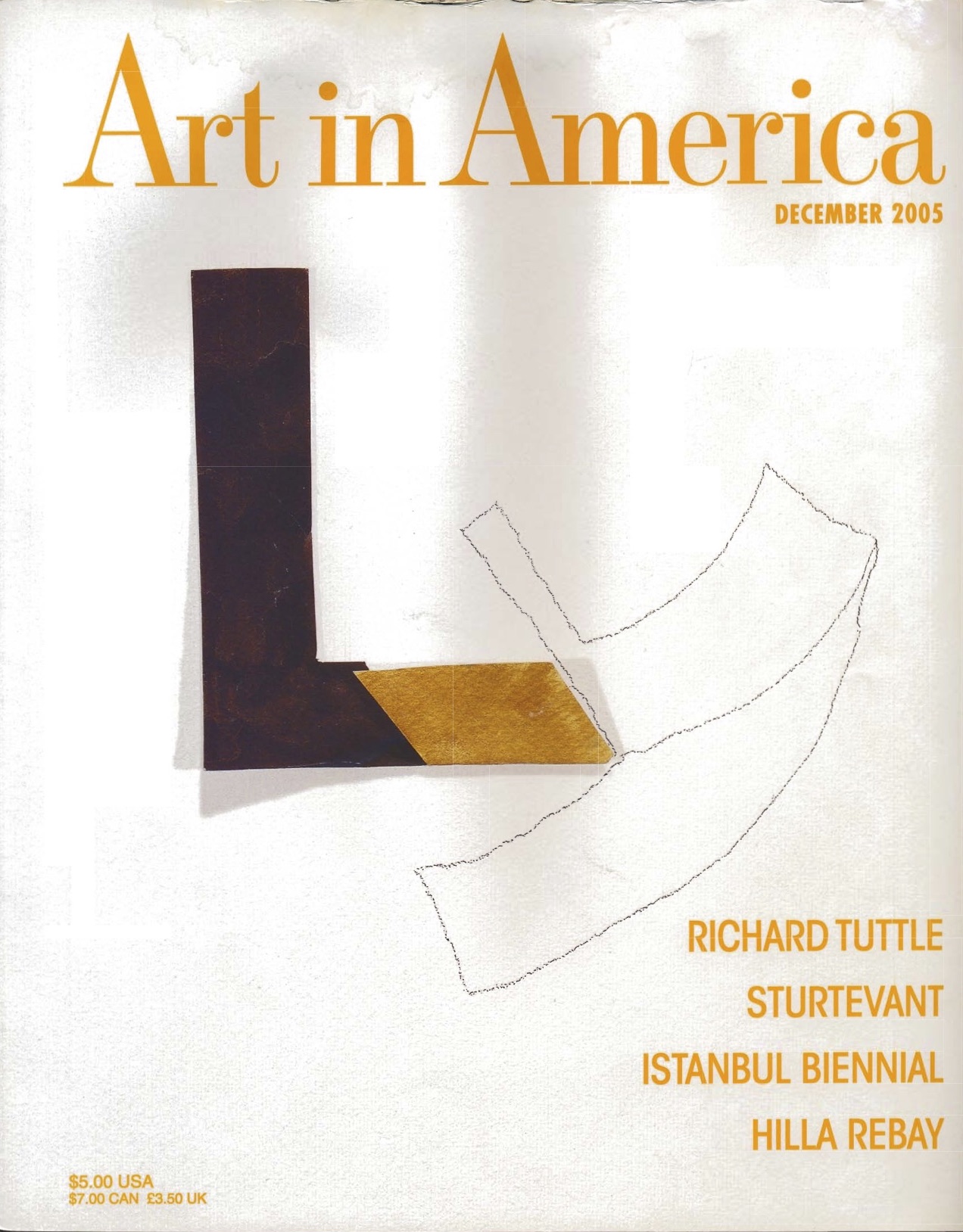
“Airborne Abstraction”, ART IN AMERICA reviews Jackie Matisse’s exhibition
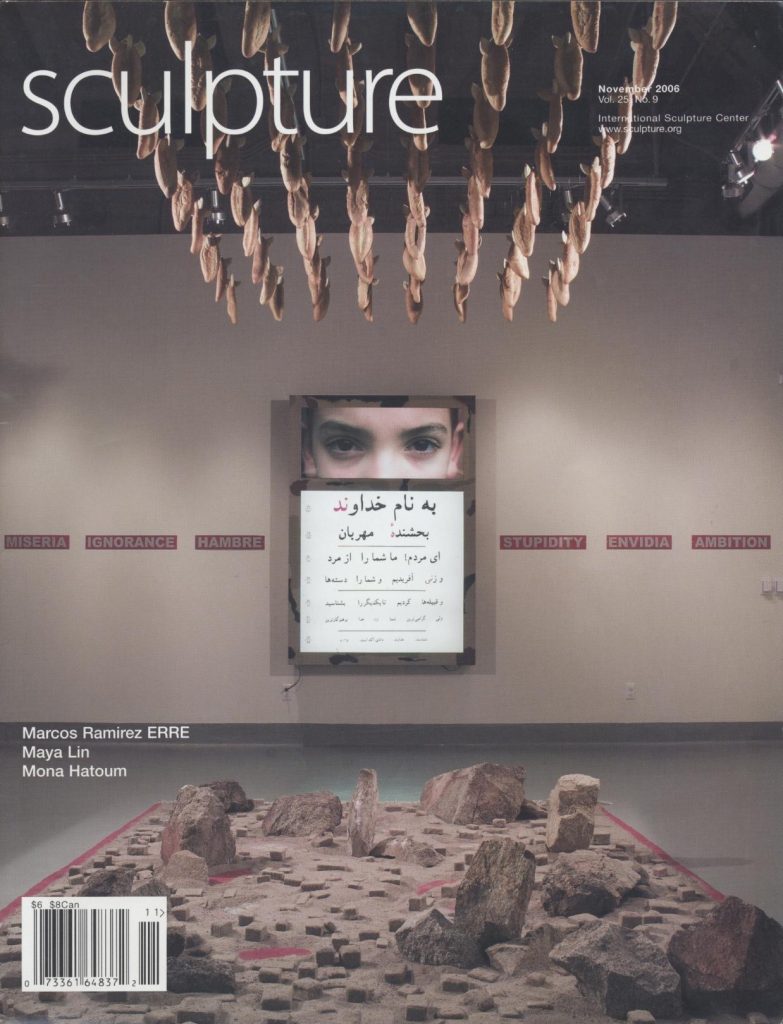
SCULPTURE MAGAZINE review on Jackie Matisse
Categories: exhibitions
Tags: Jackie Matisse
